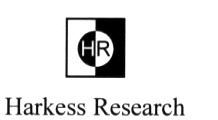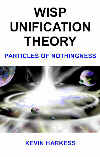
 Wisp
Unification Theory - Introduction
Wisp
Unification Theory - Introduction
- Home
- About Me
- Reasons why Einstein was wrong
- One-way speed of light experiments
- Hot topic
- Q&A
- ACES - The end of Relativity

- Book Contents
- Introduction
- 1 Matter,Space and Time
- 2 Symmetry
- 3 Fractals
- 4 Wisp Space
- 5 Gravity
- 6 Electromagnetic Force
- 7 Wisp & S.R: Fundamentals
- 8 Wisp & S.R: Electrodynamics
- 9 Wisp & S.R: Doppler effect
- 10 Wisp & S.R: Relativistic Mechanics
- 11 Big bang
- Appendix A
- Appendix B
- Index A-Z
- Copyright
- Feedback
This page contains the complete chapter. To download the new 2011 2nd edition of wisp unification theory go to the homepage.
Introduction
Wisp theory is unique and it explains the fundamental properties of nature in a clear and simple way.
In 1978 I had concluded that matter could not possibly be a hard ‘something’
in a space that was empty, simply because force needs a medium in which
to propagate.
Fifteen years later, on 11 December 1993 and quite by chance a simple
thought occurred to me:
- Fractals form in ‘full’ space, creating particles that have empty space at their centres.
I knew immediately that this was the correct answer to the mystery of
the composition of matter.
Our senses convince us that matter is hard and that space is empty. Even
the great Sir Isaac Newton held this view. In his treatise Opticks, published
in 1704, he wrote in Query 31 about matter being solid, very hard and
unbreakable. But our senses deceive us: the reverse is in fact the truth.
Reality is effectively a ‘photographic negative’ of what we
perceive.
Empty space is not void, it is full of wisps (the smallest fundamental particles in nature) and hence full of mass, but its mass lies dormant, and only manifests itself when it is disturbed. Disturbances create particles – fractal shapes – which lock quantities of wisps together, giving particles unique masses.
Wisp space is an ether medium by definition, but it differs from conventional
notions, in that matter does not pass through it, but is instead, a part
of it. Matter and space are essentially made from the same substance –
wisps.
Our understanding of the nature of wisp space will help us visualise how
mass and energy interchange in accordance with Einstein’s famous
equation, E = mc^2.
Wisp theory is able to resolve two great mysteries of physics:
- How do particles get their masses?
- What causes gravity?
Answering these questions challenges Einstein’s special theory of
relativity – a fundamental pillar of modern physics.
However, you are advised to keep an open mind when reading this book as
it contains many new unproven concepts. My hope is that theoretical and
experimental physicists will consider wisp theory and put it to the test.
I have included tests in the appendices that challenge the predictions
of special relativity.
The simplest way to test special relativity is to carry out an accurate one-way speed of light measurement (see section 7.7.1). It is truly amazing that no one has done this, or even considers it necessary. However, when this is done, Einstein's 'principle of relativity' will be shown to be false and our fundamental understanding of physics will have to change. Wisp theory is a new starting point.
Kevin Harkess BSc (Hons)